Early Career Scientist Spotlight
Dr. Andrew Feldman
Hydrologist/Biospheric Scientist
Biospheric Sciences Laboratory (618)
What is your research focus?
I am interested in global plant function (i.e., plant water uptake, photosynthesis, growth) and specifically how climate influences photosynthesis and transpiration, which are major contributors to Earth’s carbon and water cycles. Plants play a large role in Earth’s climate system, and we now have satellites measuring the surface at multiple frequencies to tell us how green they are, how much photosynthesis they are doing, how warm they are, and how much water is within them.
The question that will keep me busy for my lifetime is: how is climate variability and its changes influencing the carbon and water cycles? We know that the annual averages are changing: land surfaces are warming, the atmosphere is drying, and total amount of annual rainfall is changing heterogeneously, all of which directly influence the average annual plant function. However, an increasingly recognized climate change feature is the increasing climate variability year to year and within the year. I am investigating the plant response to two specific variability features: (1) Individual rain events are becoming fewer, but stronger, so plants are experiencing larger inputs of rainfall, though with longer dry spells between storms. (2) Droughts and heatwaves are becoming more extreme and more frequent, with their impacts influencing plant function to varying degrees across the globe.
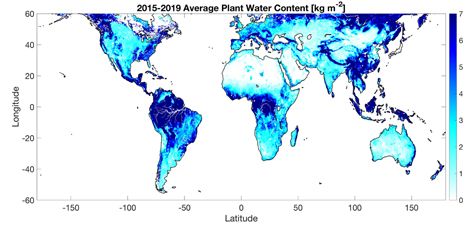
Credit: Andrew Feldman
What aspect of your work excites you the most?
It is exciting to now have satellite remote sensing so widely available, enabling us to observe an array of Earth’s land surface properties and test hydrologic and ecologic theories posed decades ago. 30 years ago when my PhD advisor was addressing similar research questions as I am today, researchers were limited to available global or regional models and sparse records of field observations. Satellite observations were more limited and experimental at that stage. Now, we live in more “data-rich” conditions with a constellation of remote sensing platforms. For example, I worked with low-frequency microwave observations from NASA’s Soil Moisture Active Passive (SMAP) satellite during my PhD. I started my PhD just after a year’s worth of data was made available – fortunate timing for my career! SMAP was originally only meant to retrieve surface soil moisture, a key variable at the nexus of land and atmosphere. However, we also found SMAP provides information on the total water volume inside plants. Most notable for my research questions, SMAP provides plant water content retrievals every 1-3 days due to its ability to measure in all weather conditions. SMAP therefore gives us insights into plant function on timescales of individual rain events. Prior to this newer microwave measurement technique, we had only been able to sample vegetation properties at the top of the canopy (such as greenness) every 8-days or more due to cloud cover limitations, which typically only allowed monthly or seasonal evaluations of plant function.
Another fun aspect of my research is that people across the world are addressing similar research questions. I’ve made friends from all over the world and have been fortunate to travel to many locations across the US, as well as internationally to Spain, Japan, Belgium, and Quebec.
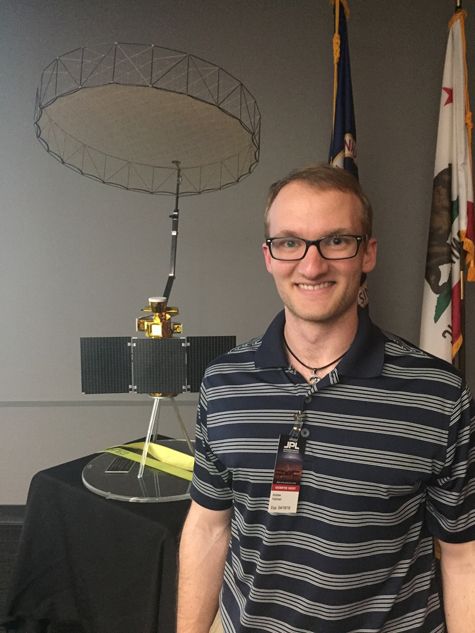
Credit: Daniel Short Gianotti
Tell us about one project of yours that has been particularly impactful in your field.
Using newer satellite microwave observations of Earth’s land surface, I was able to test an old ecology hypothesis about how plants respond to individual rain events. The Pulse Reserve Paradigm was posed by the late Imanuel Noy-Meir in a seminal 1973 ecology publication. It is a hypothesis that describes how plants in arid environments wake up when it rains by rapidly growing and storing carbohydrates, but then with sufficient drying they reduce function as they wait for the next event. In one of my first PhD publications, we showed how this behavior is indeed widespread across dryland environments and even shows signs of occurring in wetter environments, but at a weaker magnitude and with less spatial prevalence. This finding provided some spatial context for field ecologists who have been studying these plant pulse responses for several decades almost solely in arid environments. This work was also important for the satellite remote sensing community in showing how these new microwave data and judicious development of retrieval algorithms can be used to observe soil-plant water evolution at nearly daily timescales. We were later able to use this information to show why dryland environments are particularly vulnerable to climate variability.
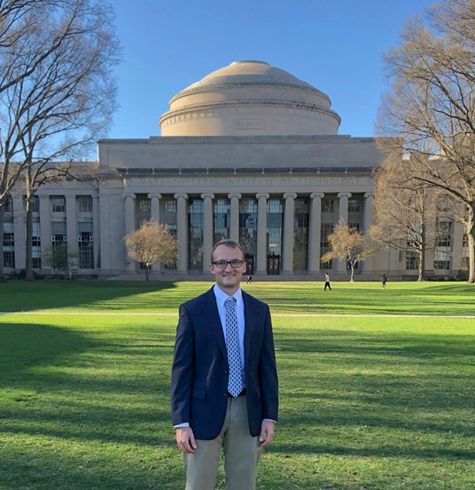
Credit: Kelly Trussell
Who inspires you?
I’ve surrounded myself with wonderful colleagues near my career stage. A few that have stood out are Julia Green, Alexandra Konings, and Kaighin McColl. Every time I read one of their papers, I think, “wow, this is the right way to do science.” I also receive a constant source of inspiration from Dara Entekhabi and Ben Poulter, who are my doctoral and postdoctoral advisors, respectively.
Notably, the late Peter Eagleson, my academic “grandfather” (the PhD advisor of my PhD advisor), is an inspiration to both the way I do science and my specific science questions. Because I never directly knew him, Dr. Eagleson is more like my historical inspiration, just as Marie Curie or Charles Darwin are to scientists in their respective fields. His research style imprinted on my PhD advisor and then to me, which includes a focus on understanding the fundamentals, or the “why,” as deeply as possible. Consequently, I am always chasing the mechanistic explanation. Dr. Eagleson published a series of seminal papers in 1978 in Water Resources Research. One of these papers inspires nearly all of my work. It includes a theoretical model that states that if you know how an individual rain event influences the land surface, then you can describe much of the land surface behavior over the year. Effectively, it names the rain pulse and interstorm period as the fundamental building block for how we should think about land surface response to climate variability. This framework motivated my PhD thesis titled “Soil-Plant-Atmosphere Coupling during Interstorm Periods” which was an observational test of this idea. Dr. Eagleson passed away in January 2021 just before my PhD thesis defense and mere days before I was awarded the NPP fellowship to come to GSFC to work on these ideas further. While unfortunate, to me, this timing elegantly represented the passing of the baton from one science generation to the next to complete these ideas.

Credit: Alexandra Konings
How did you end up working at NASA Goddard?
With my interest in climate variability, I noticed the seminal work of Ben Poulter, a research scientist in GSFC 618, that identified global semi-arid ecosystems as major climate variability hotspots with their strong influences on global carbon cycle variability. In addition to this mutual interest, I was drawn to Ben’s modeling perspective that would complement my remote sensing focus. I “cold”-emailed Ben during the 2020 COVID lockdowns to see if he would support an NPP application to work on my questions. And here I am. I had originally anticipated becoming a tenure-track professor. However, I’ve made recent strides on my research questions working at NASA and will continue working on these questions with a recently funded ROSES proposal.
What are your future research interests and goals?
For my primary interest related to studying climate variability, I would like to determine which land surfaces fundamentally have the most vulnerability to change. In other words, if we changed aridity everywhere by proportionally the same amount, which regions will respond the most? These regions can be viably named “climate change hotspots,” as long as they also have an amount of climate variability currently acting on them. I recently received funding to quantify the vulnerability of land surfaces to drought events using NASA’s ECOSTRESS (ECOsystem Spaceborne Thermal Radiometer Experiment on Space Station) instrument that is currently onboard the International Space Station.
I also plan to continue case studies of observational monitoring of how extreme climatic events influence the land surface, and specifically the degree to which plants carbon uptake responds. With the increasing prevalence of extreme weather, there is no shortage of events that need to be evaluated with satellite observations to test whether our global models are adequately representing extreme biosphere responses.
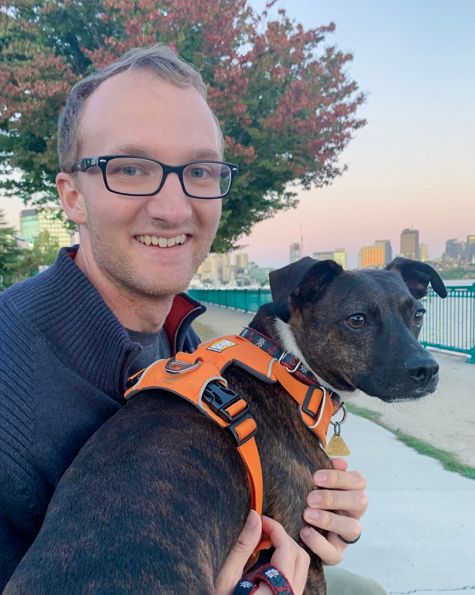
Credit: Kelly Trussell
What do you like to do in your free time?
I love hiking with my wife and dog. My wife and I have been taking yearly hiking trips since 2018 to different state and national parks. We have enjoyed several-day trips on trails in Vermont, New Hampshire, Maine, West Virginia, and Tennessee. We are starting to branch out to western US states. During our day hikes on local trails, we often take our pup. I also enjoy staying active daily by going to the gym or running local trails. It is a great way to break from deep scientific thinking!
I also like to golf with my parents and friends. As a fun fact, I was formerly a competitive golfer. I was fortunate to play on my varsity high school team in Allentown, PA and played in the Pennsylvania state championship on several occasions. I was later recruited on Drexel University’s Division I golf team in Philadelphia, Pennsylvania and was provided with a partial scholarship that was critical for me to be able to attend college there to study engineering.
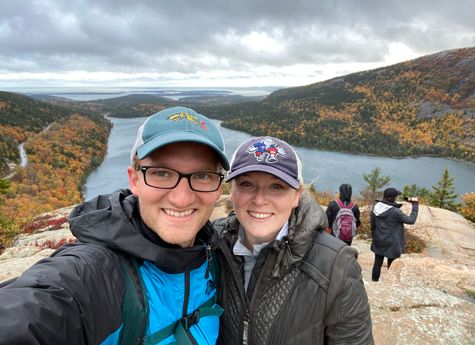
Credit: Andrew Feldman
Biography
Home Town:
Allentown, Pennsylvania
Undergraduate Degree:
B.S./M.S. Civil Engineering, Drexel University, Philadelphia, Pennsylvania
Post-graduate Degrees:
S.M. and Ph.D. Civil and Environmental Engineering, Massachusetts Institute of Technology, Cambridge, Massachusetts
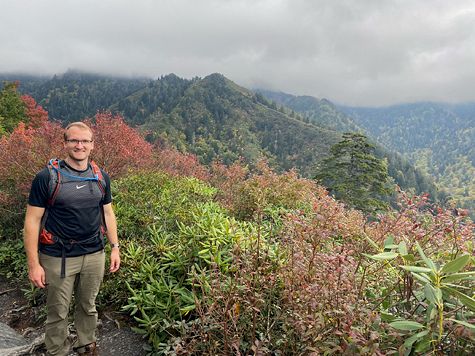
Link to Dr. Feldman's GSFC Bio
